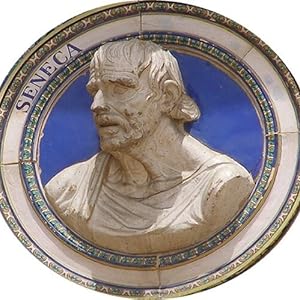Xenophon
关于作者
Xenophon (/ˈzɛnəfən, -ˌfɒn/; Greek: Ξενοφῶν [ksenopʰɔ̂ːn], Xenophōn; c. 430 – 354 BC), son of Gryllus, of the deme Erchia of Athens, also known as Xenophon of Athens, was a Greek historian, soldier, mercenary, and student of Socrates. While not referred to as a philosopher by his contemporaries, his status as such is now a topic of debate. He is known for writing about the history of his own times, the late 5th and early 4th centuries BC, especially for his account of the final years of the Peloponnesian War. His Hellenica, which recounts these times, is considered to be the continuation of Thucydides’ History of the Peloponnesian War. His youthful participation in the failed campaign of Cyrus the Younger to claim the Persian throne inspired him to write his most famous work, Anabasis. Despite growing up in Athens and being an Athenian citizen, Xenophon is also associated with Sparta, the traditional enemy of Athens. His pro-oligarchic views, service under Spartan generals in the Persian campaign and beyond, as well as his friendship with King Agesilaus II endeared Xenophon to the Spartans, and them to him. A number of his writings display his pro-Spartan bias and admiration, especially Agesilaus and Constitution of Sparta. Other than Plato, Xenophon is the foremost authority on Socrates, having learned under the great philosopher while a young man. He greatly admired his teacher, and well after Socrates’ death in 399 Xenophon wrote several Socratic dialogues, including an Apology concerning the events of his trial and death. Xenophon’s works cover a wide range of genres and are written in very uncomplicated Attic Greek. Xenophon’s works are among the first that many students of Ancient Greek translate on account of the straightforward and succinct nature of his prose. This sentiment was apparent even in ancient times, as Diogenes Laertius states in his Lives of Eminent Philosophers (2.6) that Xenophon was sometimes known as the "Attic Muse" for the sweetness of his diction. Bio from Wikipedia, the free encyclopedia. Photo by Scan by User:Gabor [Public domain], via Wikimedia Commons.
阅读完整简历















